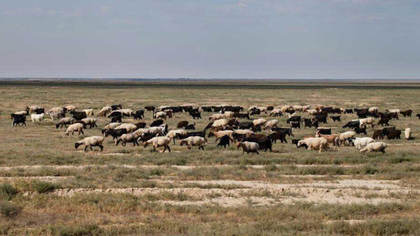Main pastures in Uzbekistan have seen their potential for natural fodder production reduced and have become unusable, it was announced at the meeting of the Senate Committee on Agrarian and Water Management.
Reportedly, geobotanical studies were conducted on 4.2 million hectares of pastures, maps of degraded areas were prepared, and practical work on restoration and improvement of 420,000 hectares of degraded pastures is being carried out.
More than 50 percent of the pastures occupying the area of 21 million hectares in the country are in various degrees of crisis. In 2019, this figure stood at 16.4 million hectares (78 percent of total pastures).
Due to the fact that the system of rotation of livestock has not been introduced in the pastures and the number of livestock has increased sharply, the pasture lands have come under great pressure. As a result, nutritious fodder plant species have become scarce and have reached the point of extinction.
At the meeting of the committee, in order to clarify these issues, it was unanimously approved to send a parliamentary request to the Cabinet of Ministers.
Earlier, PhD of agricultural sciences, professor Usman Norkulov said that 200 species of 1,700 species of plants growing in pastures have now completely disappeared. The scientist said that in the next 50 years, the crisis in pastures will increase. This is caused by climate changes, soil erosion and the human factor.













